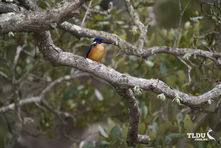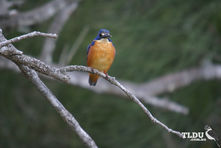
Shoppers Feedback:
Jan 17, 2017
Hello Ros,
I have now paid the invoice, but I would like to write to you just to say a big THANK YOU for getting me the Penguin!
The ChatterMate Penguin became a nice memory for me when I was in New Zealand, and I am so greatful to you for arranging so that I could have it! :-)
Thank you so much!!!!!!!!!!!
Regards,
Malin
Hi Ros,
Many thanks for your very kind email. I really appreciate your prompt reply!
I appreciate your advice regarding the decorations and customs. These are a gift for my daughter’s exchange student family so when she returns home on the weekend I will show her and see if she loves them as much as I do!
Thanks so very much again - I am truly grateful for your kind assistance.
Kind Regards
Bernadette
Ros,
Thanks again for the great customer service. It's a refreshing change!
Best regards,
Trevor
Hey Roz,
Thank you for your emails. Just loved my first order. The cute little Aussie bush critters are going to be used for an office Christmas decoration. My colleagues also liked them and talked about making an order to your site. I'll send you a photo when completed.
I'll be ordering more to send to my daughter's host family in America.
Fabulous service from you.
Kind regards,
Michelle
Thankyou. Order arrived today. One very happy grandson with his new beastly binoculars.
Regards,
Irene
- Home
- Wild Wonders
- Shop
- Aromas of Australia
- Australian Made
- Books
- Book Marks
- Christmas Decoration Sale
- Christmas Decorations
- Clocks
- Drink Holders
- Garden & Outdoor
- Gift Wrapping & Cards
- Home & Giftware
- Jewellery
- Keyrings
- New Products
- Pencils & Pen Holders
- Photo Frames
- Plush Toys
- Plush with Sound
- Sheepskin Rugs
- Stationery
- Stone Carvings
- Toys & Games
- Travel Goods
- Wedding
- Wild Figurines
- Wildlife Safety Products
- Wind Chimes
- Wine Charms
- View All Products
- Wildlife
- Australiana
- Explore
- Contact Us
Azure Kingfisher

Quick Facts
| Length: | 18 cm |
| Height: | - |
| Weight: | 35 grams |
| Colour: | Mostly azure, throat pale orange-white, grading to orange-reddish on belly and undertail |
| Habitat: | Freshwater rivers, creeks, billabongs, lakes, swamps and dams |
| Food: | Fish, crustaceans, aquatic insects, invertebrates and frogs |
| Predators: | - |
| Status: | - |
The Azure Kingfisher is a small kingfisher with a long slender black bill and a short tail. The head, neck, upper parts and breast sides are deep azure blue with a violet (purplish) sheen. The neck has a distinctive orange stripe on each side and there is a small orange spot before each eye. The throat is pale orange-white, grading to orange-reddish on belly and undertail. The flanks and sides of the breast are washed purple to violet. The legs and feet are red. The sexes are similar. Young birds have a darker cap and are generally duller.
The Azure Kingfisher has a similar shape to the Little Kingfisher, but is much bigger and is distinguished by its orange underparts and violet sheen. It is much smaller and has a shorter tail than most of the kingfishers, which have white underparts and black legs and differs in particular from the similarly sized Forest Kingfisher, which has white underparts and a turquoise/green tint rather than violet/purple.
The Azure Kingfisher is found across northern and eastern Australia. In Australia, it is found from the Kimberley region, Western Australia, across the Top End to Queensland, and is widespread east of the Great Dividing Range to the Victorian border and south into Victoria.
The Azure Kingfisher is never far from water, preferring freshwater rivers and creeks as well as billabongs, lakes, swamps and dams, usually in shady overhanging vegetation. It is sometimes seen in parks on rivers, as well as duck or goldfish ponds in urban areas.
Seasonal movements: Sendentary
The Azure Kingfisher plunges from overhanging perches into water to catch prey. Prey items include: fish, crustaceans, aquatic insects and other invertebrates, and, sometimes, frogs. They will often bash their prey against the perch before swallowing it head first. Often watch Platypuses foraging underwater and catch any food items that are disturbed.
Azure Kingfishers form monogamous pairs that defend a breeding territory. Both parents incubate and feed the chicks. The nest is at the end of a burrow dug out of soil in a riverbank. The tunnel slopes upwards to the nesting chamber and can be 80 cm - 130 cm long. Flooding can destroy low-lying burrows.
Stock trampling vegetation around waterholes affects the Azure Kingfisher. Human activities that cause artificial flooding of waterways can drown nests. Water that is turbid (not clear) and the introduction of European Carp (which competes for food resources) can also adversely affect local populations.
Last Updated: Thursday 9th January, 2014
BirdLife Australia - www.birdlife.org.au
BUSH e-TELEGRAPH
Signup for our monthly newsletter the "e-Telegraph"
Quick Links
Home | The Beginning | About The Land Down Under | Wild Wonders | Advertise on Wild Wonders | Christmas Decoration Sale | Christmas Tree Decorations | Drink Holders | Plush with Sound | Stone Carvings | Wildlife Wine Charms | Freebies | Australian Wildlife | Help Our Wildlife | Australiana | Photo of the Month | Explore The Land Down Under | Contact Us | Legal Notices


